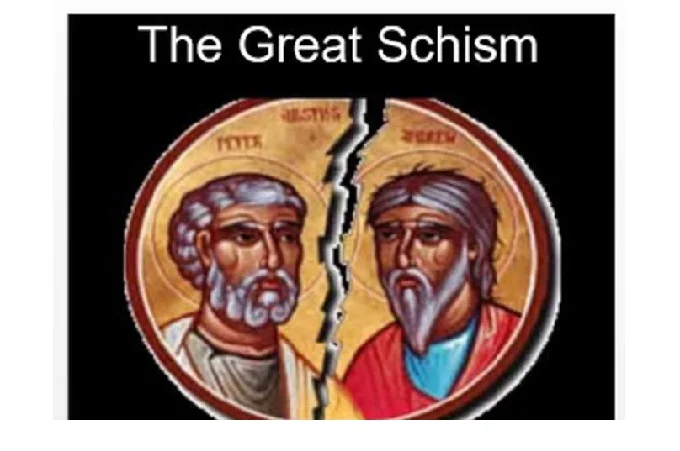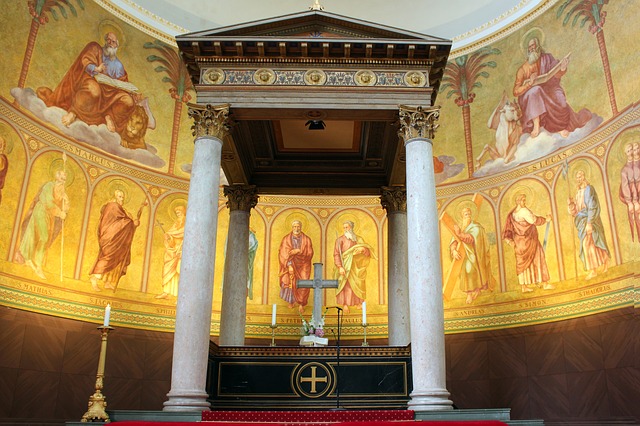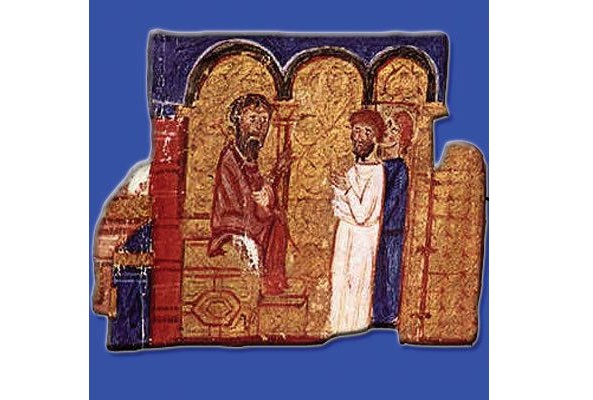What caused the Great Schism, and the main reason for the collapse of Christian churches

The denial of the divine nature of Christ by the priest Arius was one of the reasons for the convening of the Council of Nicaea. He embodied the spirit of the elite Greek culture found in cities such as Alexandria and came under the influence of various dualistic and Gnostic schools. This led to his rejection of the Holy Trinity and the understanding that if Christ was the creation of the Father, then there was a time when he did not exist, and therefore he was not the same essence.
With this attitude, he denied the very essence of Christianity, so the church declared him a heretic. These early disagreements were a sign of things to come. Regular theological disputes in the church contributed to a serious split between Orthodoxy and the Catholic faith in the so-called Great Schism of 1054.
Church in the Middle Ages

The Christian Church grew into a powerful organization after the Roman Empire recognized and strengthened it before the barbarians overthrew the West. The gifts and wills increased the church’s possession, which had the same organization like the Roman Empire. Parishes were the smallest church units, and a priest headed them. Larger areas were called episcopates and were ruled by a bishop.
During the Middle Ages, the church persisted in charity work and often founded and supported institutions that cared for orphans, the elderly, the weak, and the sick. During this period, there was a so-called five-headed church, a church that consisted of five patriarchates. In the West was Rome and in the East – Constantinople, Alexandria, Antioch, and Jerusalem. The Roman high priest is called “pope,” which comes from the Greek word Pappas, meaning “father.”
Before the Great Schism took place, Christianity in the West had grown stronger, and this process was reflected in a noticeable increase in the power of the bishops. In many ways, they increasingly assumed the powers of former local governors. The bishops had the means and were able to carry out tasks that had previously come under the jurisdiction of local Roman nobles.
Ecumenical Councils and Orthodoxy

Christian dogma was not given and defined; it was formed during the discussions of theologians. Sometimes great and bitter conflicts arose between the clergy, as evidenced by the church’s teachings declared heresies. The highest level of debate took place at the Ecumenical Councils (councils, meetings).
These were meetings of bishops or their representatives from all over Christendom. Decisions were made regarding faith, doctrine, order, worship, and discipline. They are considered inviolable authority in the church’s teachings and were the only organ of Church law, order, and structure. Consequently, the decisions of councils have been binding on the entire church throughout history.
Orthodox Christianity recognizes only the first seven ecumenical councils, which took place from the 4th to the 8th centuries, and no more. In addition to the first seven, the Roman Catholic Church recognizes as universal fourteen of its councils, which were held from the 9th to the 20th century. Orthodox Christianity does not recognize these later councils, held after the Great Schism, as universal.
Monks

Before the Great Schism, the church was internally split in other ways. The believing Christians, who spoke for the poorer church, retired into the wilderness, where they led a hard life away from various temptations. From their midst came monks who united in monastic communities and lived in monasteries. Monasticism was a reaction to the “utilitarianism” of Christianity. The most zealous Christians began to sever external ties with the world, which led to division and the emergence of monasticism.
The monastic movement began in Egypt in the 4th century and was founded by Copts. Among them were such saints as Anthony the Great, Paul of Thebes, and Pachomius. Monasticism quickly spread from Egypt to Palestine, Syria, Mesopotamia, Asia Minor, and Italy. Monasticism did not originate as a church institution but was a spontaneous and sporadic phenomenon.
Initially, ecclesiastical and secular authorities viewed monasteries as a phenomenon operating outside official institutions, and tensions existed between the religious clergy and monastic communities. Over time, the church took on the emergence of monasticism and began building monasteries, but some monks also left the monastic communities because they were still in some sense in contact with the world.
Controversy
The papacy was increasingly strengthened by reforms that emphasized the universalist claims of the church. However, the Byzantines in the East insisted on the inviolability of their own sphere of interest and indicated some deviations from the Western Church.
Unlike the Western Church, the Eastern Church developed to function under solid imperial, secular rule. Perhaps, on this basis, the differences between East and West grew. Both Churches considered themselves to be universal – the labels “Roman Catholic Church” and “Greek Orthodox Church” used today are modern terms.
However, both Churches share almost the same convictions. The most famous differences between them relate to the Holy Trinity: Father, Son, and Holy Spirit. The Eastern Church believes that the Holy Spirit comes only from the Father, while the Western Church claims that it comes from the Father and the Son. The Eastern Church also does not recognize purgatory as a transitional state between Heaven and Hell.
Unlike the Western Church, today, the Eastern Church permits divorce based on adultery and allows married men to become priests. Churches also disagree about the infallibility of the Pope, the Immaculate Conception, and the Dormition of the Blessed Virgin Mary.
Superiority
East-West Schism, or Great Schism, was not entirely the result of some great religious division, but rather rivalry, strife, and snobbery. For years, popes in Rome and patriarchs in Constantinople clashed over the baptism of the Eastern Slavs and ecclesiastical jurisdiction over Dalmatia and southern Italy.

In addition, the Byzantine Empire rejected the supreme position of the Pope in the church, because Rome by that time, was in their eyes a large village, a provincial city without an empire and a subordinate territory. On the other hand, Constantinople was the center of wealth and power and, therefore, had the right to become the ecclesiastical capital.
Popular propaganda among Western theologians of the 11th century was that until the 10th century, the Patriarch of Constantinople was under the canonical jurisdiction of Rome. This was confirmed by the fact that he, like any other bishop, was sent a pallium from Rome during his enthronement. This fact, according to them, confirmed the importance of Rome over Constantinople. The last Great Schism resulted from mutual accusations of interference in each other’s affairs and spheres of influence, which may have been the fault of intolerant people within the church who were unable to conduct any constructive conversations.
In Constantinople, on 16 July 1054, negotiations were held between the two patriarchates, which were supposed to end sadly. A Roman delegation led by Cardinal Humbert had already been in Constantinople since April. The Normans detained Pope Leo IX himself in the castle of Benevento from February 1053. They captured him after a battle fought by the Pope himself.
The Patriarch of Constantinople was Michael Cerularius, a man with work experience both in the church and in the state. The long stay of the cardinal and his entourage in Constantinople was held under the auspices of the emperor while they were engaged in fierce theological discussions.
On the sixteenth, during evening prayer at the magnificent Hagia Sophia in Constantinople, representatives of Pope Leo IX laid on the altar the papal bull excommunicating Patriarch Cerularius. After the Byzantines refused to accept the bull, one of the deacons of Hagia Sophia threw it out of the church. This Great Schism was the end of the one Christian Church.

The aftermath of the Great Schism
The papal representatives left Constantinople on 17 July, and on 19 July, the patriarch expressed a desire to meet with them. This is why they returned, although they did not go to the meeting. After that, the envoys finally left the Byzantine capital. The Duke of Argyros, a commander in southern Italy who openly showed solidarity with the introduction of Latin rites in the area, was also expelled from Constantinople.
On 20 July, Patriarch Michael held a council in Constantinople, attended by twelve metropolitans and two archbishops. The bull on papal succession, which pronounced anathema, was translated into Greek. It was condemned in council, and five days later, it was burned in the city.
The great schism or schism between East and West was never overcome or ironed out. Although a formal lifting of mutual anathemas was effected in 1964 between the Patriarch Athenagoras of Constantinople and Pope Paul VI, unity between Orthodoxy and Catholicism was not achieved.




